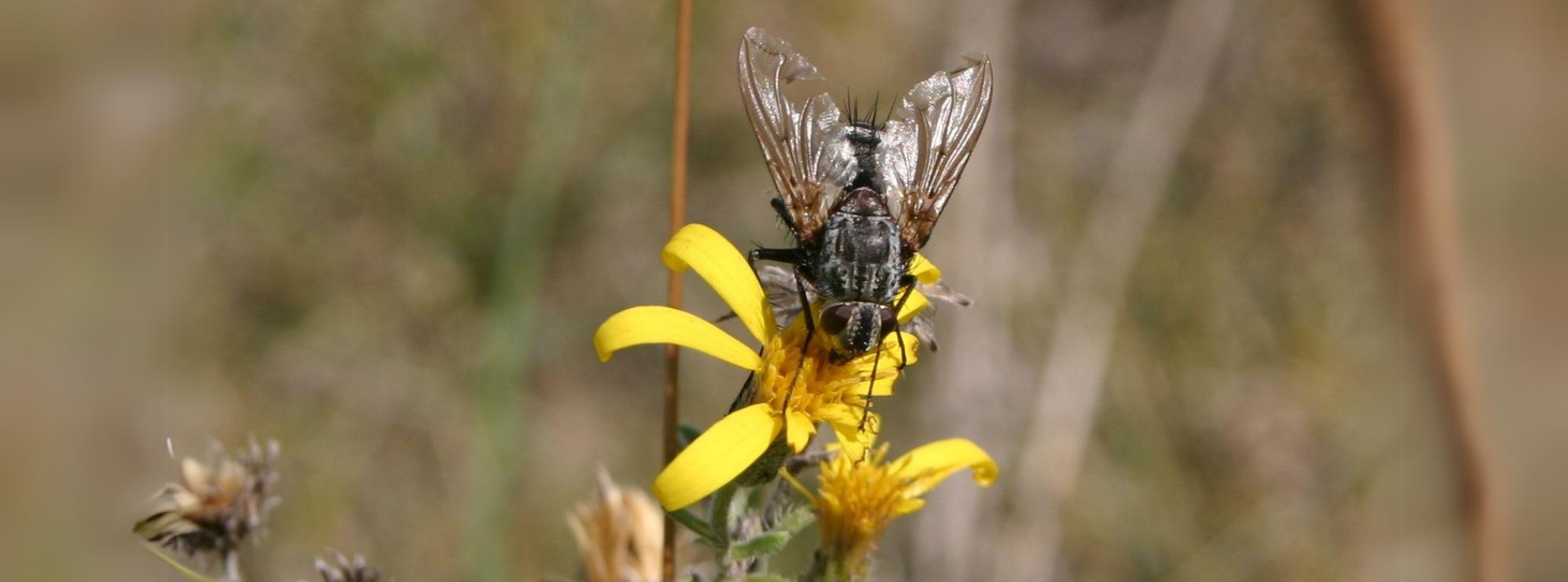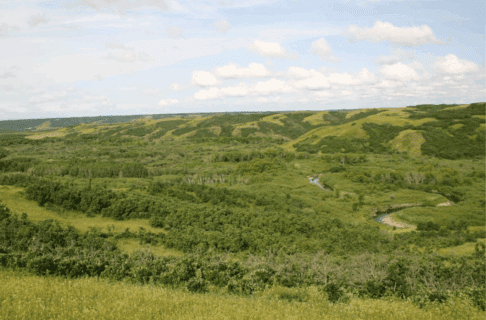Posted on: Monday September 19, 2016
It was with some sadness that I finished my last field work of the season at the Nature Conservancy’s Yellow Quill Prairie. It will be many long, cold months before I get to go out again. However, I was eager to get back to the office to crunch some numbers and see how the pollinator community in mixed grass prairie differed from the fescue and tall grass prairies that I’ve studied previously.
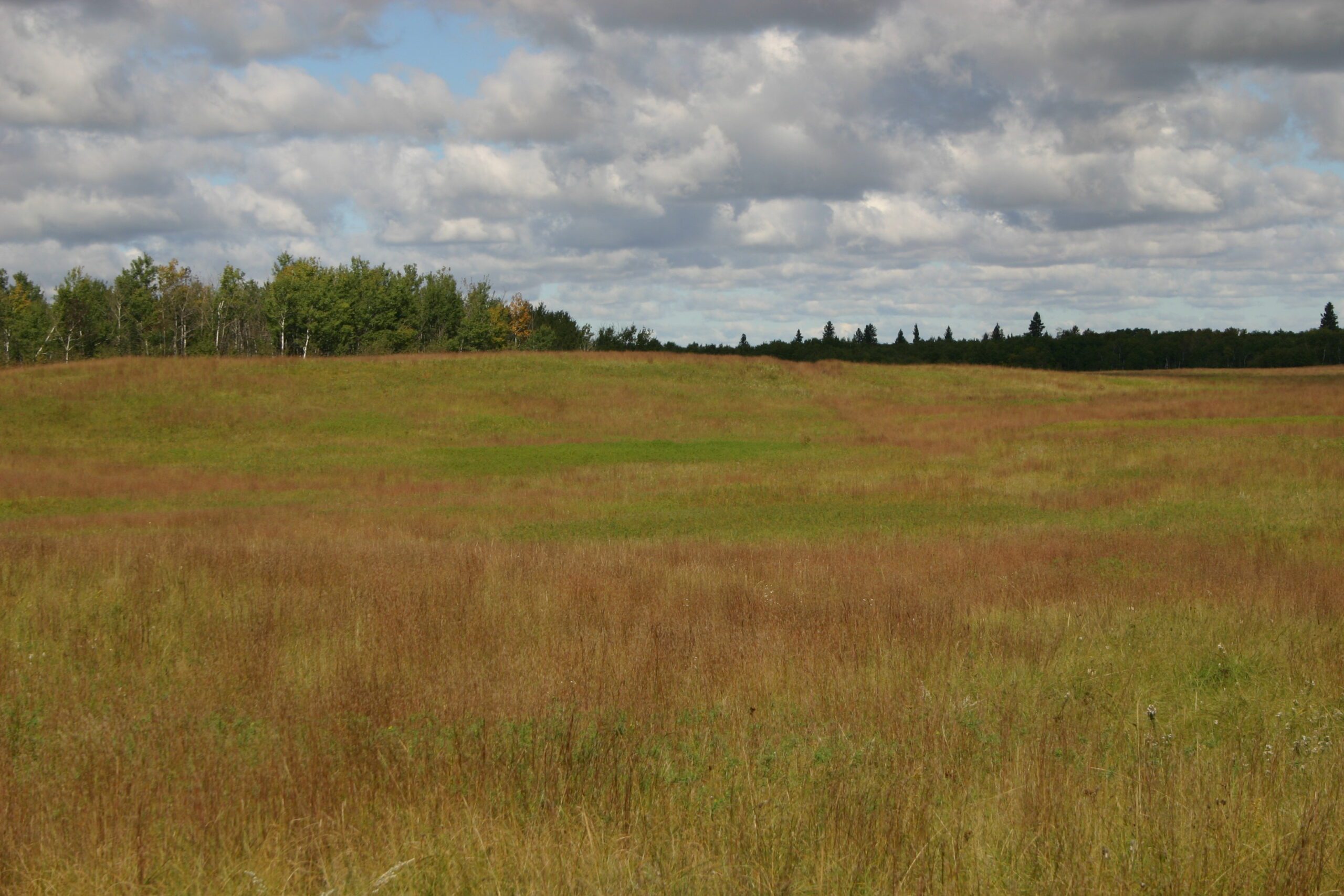
The little bluestem (Schizachyrium scoparium) had turned a lovely reddish purple by September.
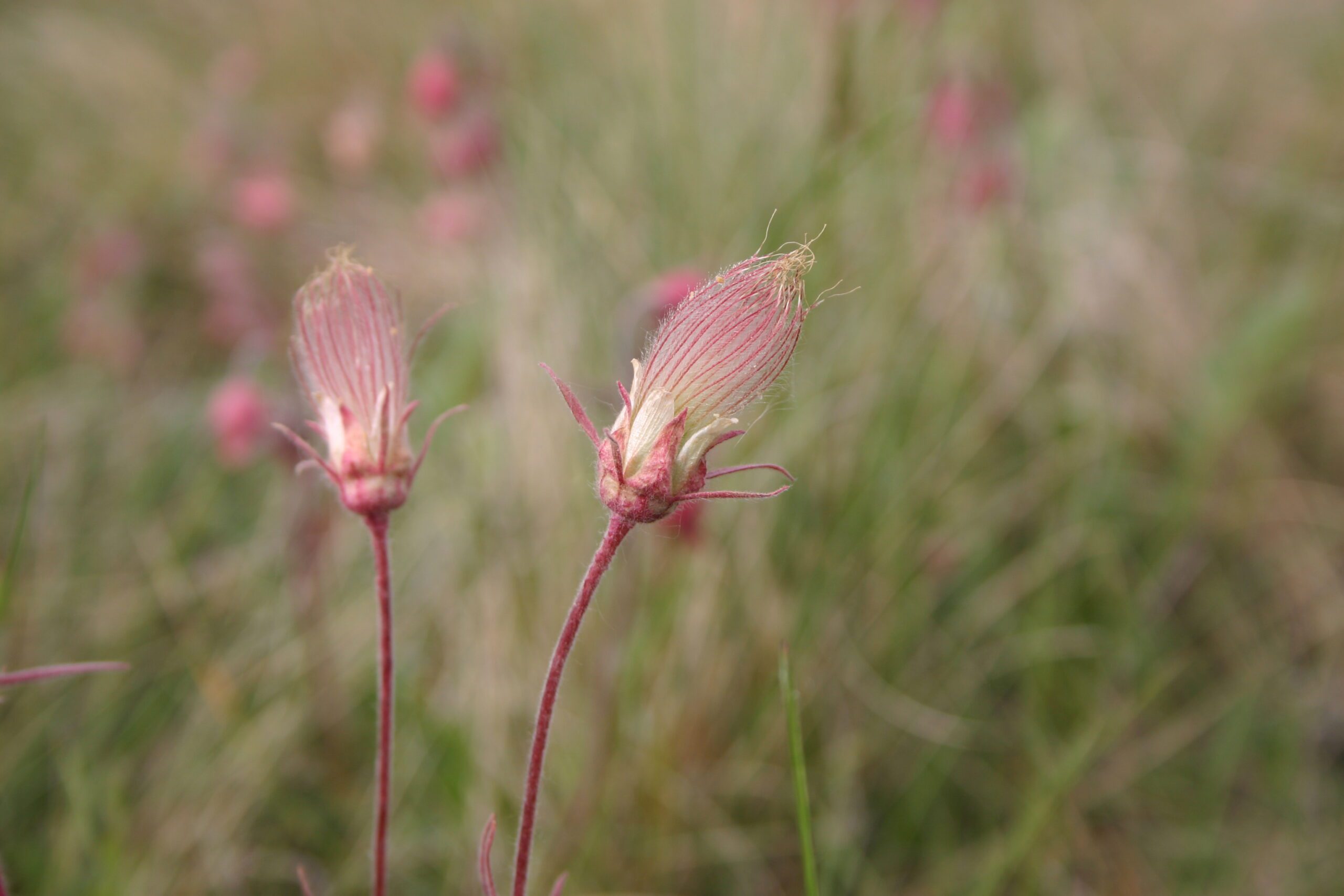
The three-flowered avens (Geum triflorum) were mostly in seed by the time I started my surveys.
The most commonly visited plant in the mixed grass prairie was wild bergamot (Monarda fistulosa), receiving just over a quarter of all observed visits, mainly from bees and butterflies. This species received only 3.6% of all visits in fescue prairie and less than 1% in the tall grass prairie. You may be familiar with this species because it is often available for sale at greenhouses.
Showy goldenrod (Solidago nemoralis) was an interesting species because it is one of the top visited plants in all three prairie types. This suggests that it would be a particularly useful plant for prairie reclamation because of its widespread distribution and popularity with a wide number of pollinators.
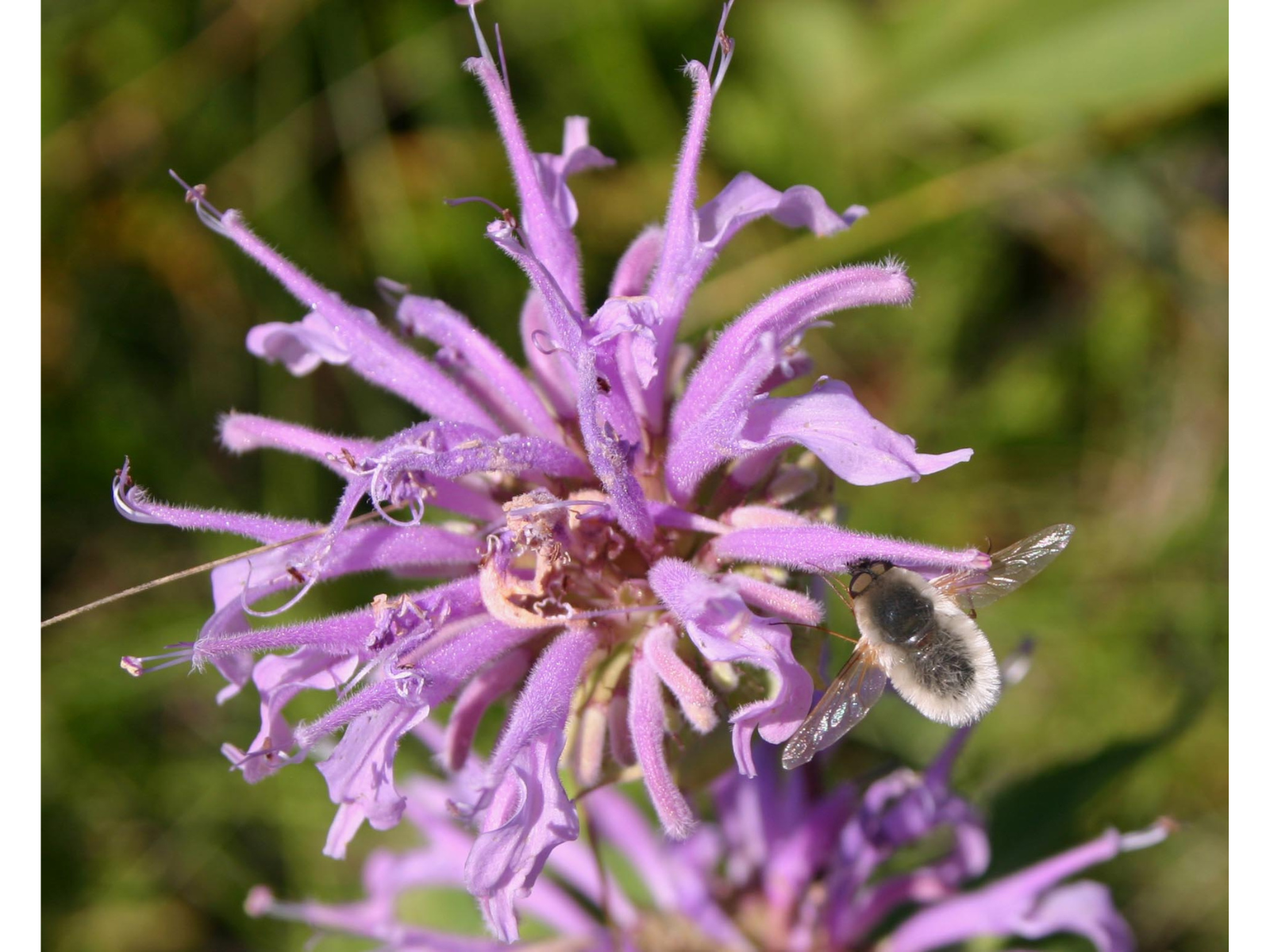
Wild bergamot (Monarda fistulosa) was the most commonly visited flower, here being visited by a bee fly (Anastoechus sp.)
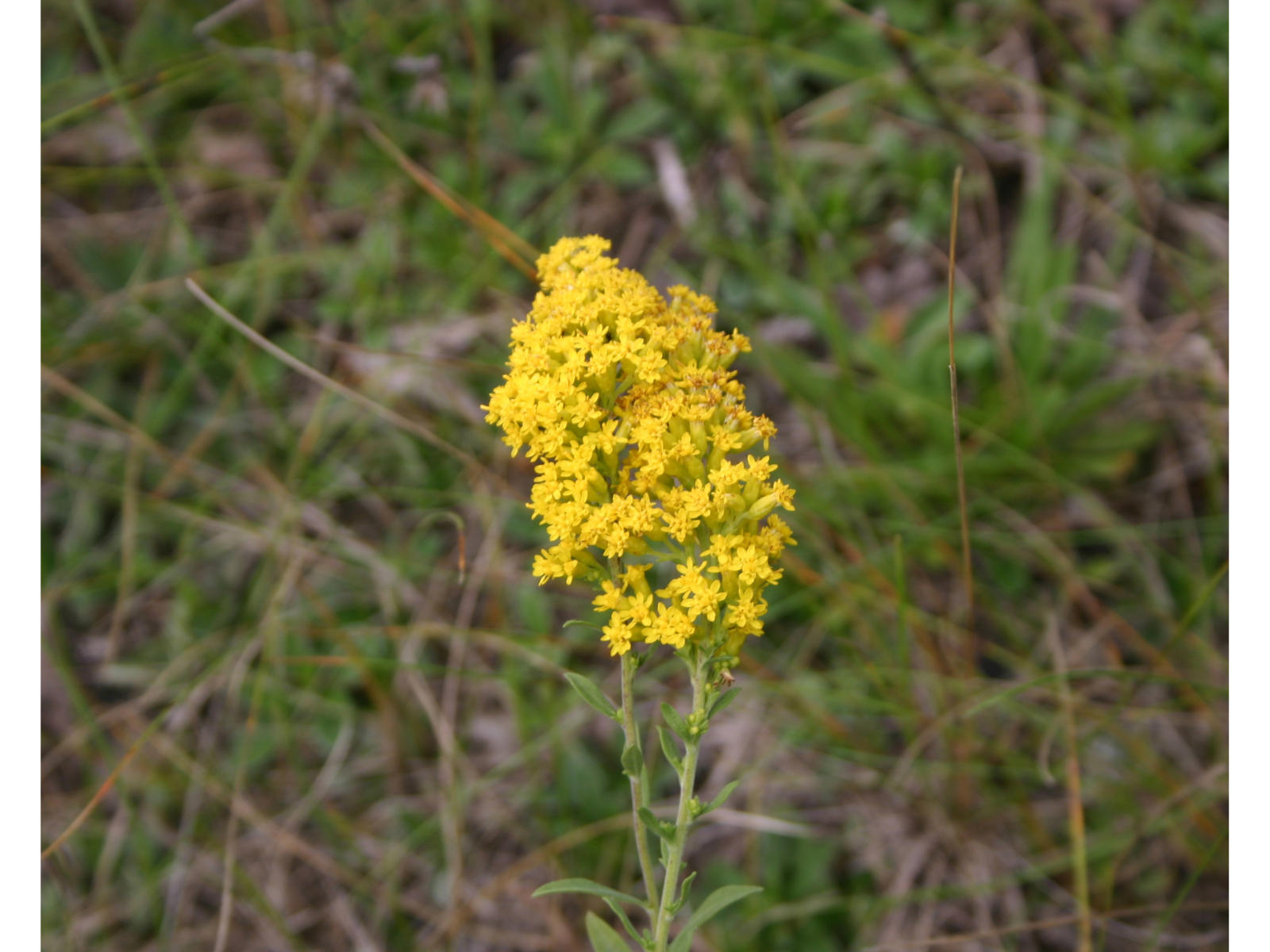
Showy goldenrod (Solidago nemoralis) was a popular plant in mixed, fescue and tall grass prairie.
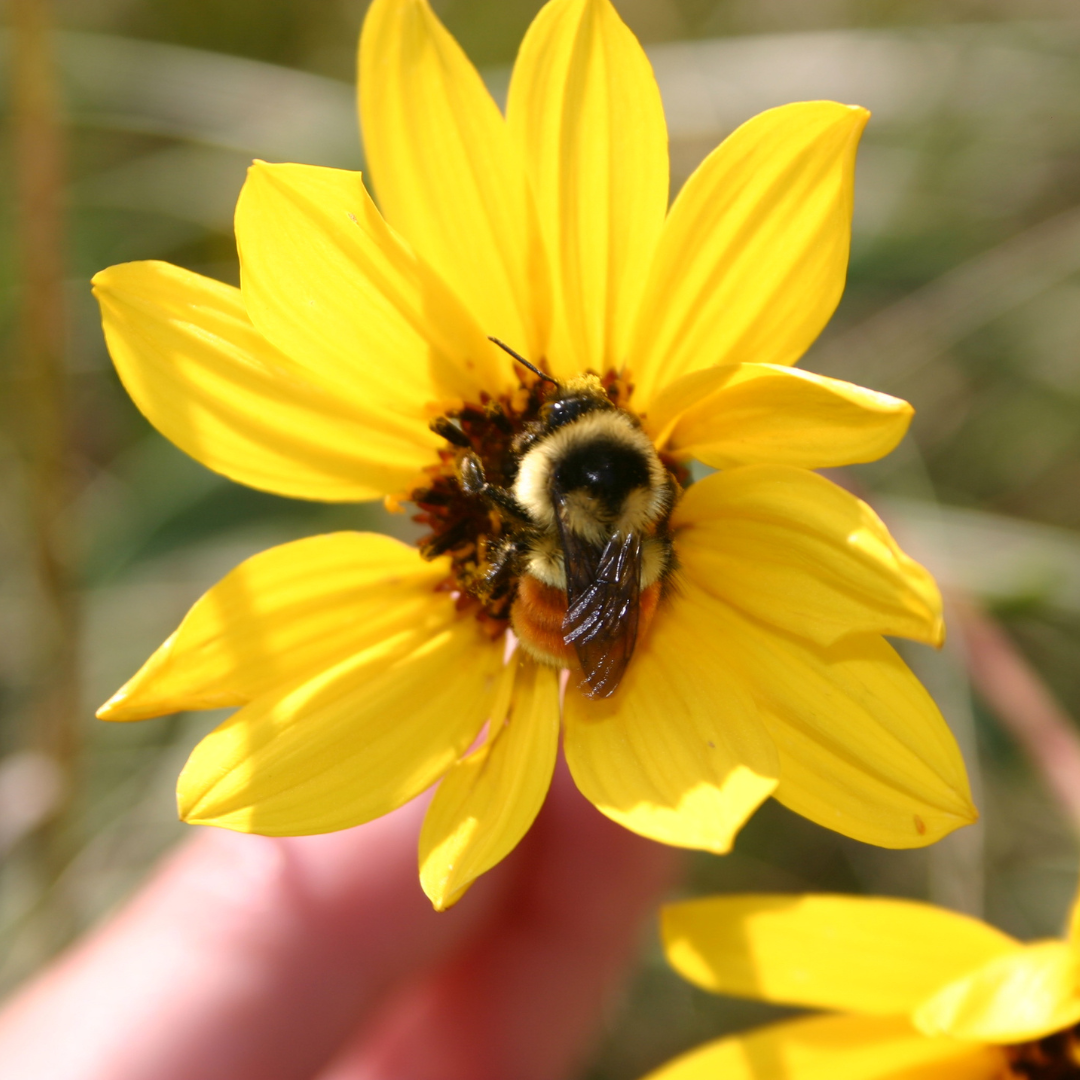
In terms of the pollinating insect community, mixed grass prairie was more similar to fescue than tall grass prairie. Bees and wasps were the dominant pollinators in mixed grass and fescue prairie whereas flies dominated in tall grass prairie, likely due to differences in moisture. Another difference was that butterflies and moths were more common pollinators in the mixed grass prairie, performing about 10% of all visits compared to 4.3% and 0.9% in fescue and tall grass prairie respectively.
The most common pollinators were bumblebees (Bombus sp.); they made almost half of all visits in the mixed grass prairie. In contrast, bumblebees were slightly more active in fescue prairie making 60% of all visits and slightly less common in tall grass prairie making 25%.
Image: Bumblebee (Bombus sp.) visiting a sunflower (Helianthus sp.)
Until next year I’ll be enjoying looking at my photographs, and remembering the smells and sounds of the prairie.




